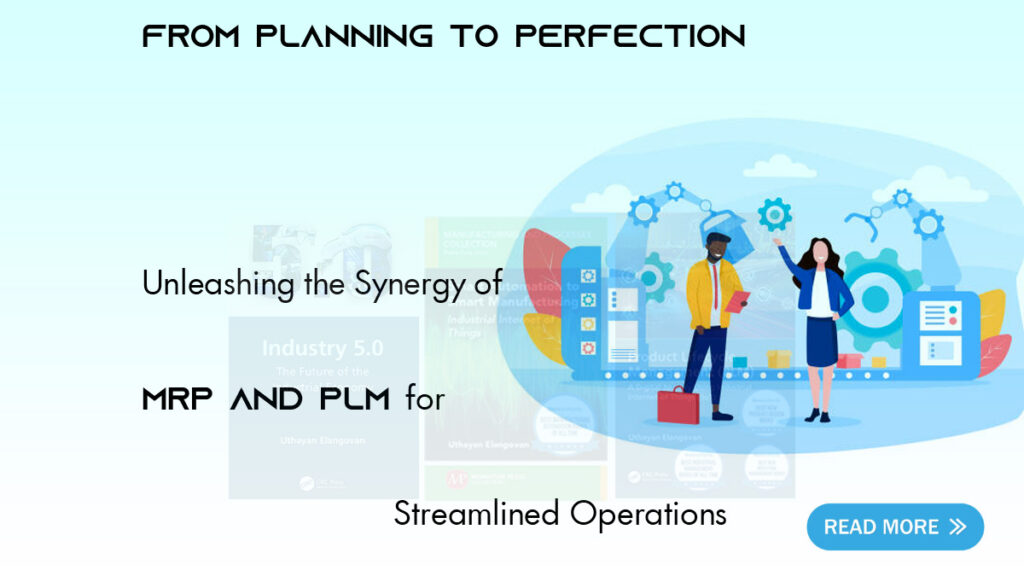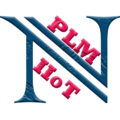From Planning to Perfection: Unleashing the Synergy of MRP and PLM for Streamlined Operations

Introduction:
Efficient resource allocation and management are critical to success in the world of manufacturing. Manufacturers face the challenge of optimizing their production processes, minimizing costs, and delivering high-quality products to meet customer demands. This is where Manufacturing Resource Planning (MRP) comes into play. In this article, we will explore MRP in simple terms, delve into its relationship with Product Lifecycle Management (PLM), and discuss how combining the two systems can bring significant business value and minimize the total cost of ownership.
Understanding Manufacturing Resource Planning:
Manufacturing Resource Planning is a software-based approach that enables manufacturers to effectively plan and control their production operations. MRP systems utilize computer algorithms and databases to manage and optimize the allocation of various resources, including materials, labor, and equipment, throughout the manufacturing process. By integrating information from multiple departments and functions within an organization, MRP ensures a streamlined flow of materials, efficient production scheduling, and improved overall operational performance.
The Core Components of MRP:
- Bill of Materials (BOM):
A Bill of Materials is the blood of the manufacturers and it comprises of list of all the components/parts and raw materials required to manufacture a product. It specifies the quantity, part numbers, and relationships between these items. The BOM serves as the foundation for MRP systems, allowing manufacturers to accurately calculate the material requirements and plan their procurement activities accordingly. - Inventory Management:
Inventory management is a crucial aspect of MRP. By analyzing the demand forecasts, sales orders, and production schedules, the system can determine the optimal inventory levels for each component and finished product. This ensures that the necessary materials are available when needed, preventing stockouts and minimizing excess inventory. - Production Planning and Scheduling:
MRP systems generate production plans and schedules based on the demand forecasts, available resources, and lead times. By considering factors such as equipment availability, labor capacity, and material availability, MRP optimizes the production process to meet customer demands efficiently. It helps manufacturers avoid bottlenecks, optimize production flow, and minimize production lead times.
PLM and its Relationship with MRP:
PLM encompasses the entire lifespan of a product, from its conceptualization to retirement. It involves managing all the data, processes, and documentation associated with a product throughout its lifecycle. PLM systems help manufacturers collaborate effectively across departments, track product changes, manage engineering designs, and ensure regulatory compliance.
The integration of MRP and PLM systems creates a powerful synergy, enabling manufacturers to streamline their operations and enhance productivity at every stage of the product lifecycle. Here’s how the collaboration of MRP and PLM brings business value and minimizes the total cost of ownership:
- Improved Data Accuracy and Consistency:
Integrating MRP and PLM eliminates manual data entry and duplication, ensuring that information flows seamlessly between the systems. This reduces the risk of errors and discrepancies, improving data accuracy and consistency. Manufacturers can rely on accurate product data, bills of materials, and engineering changes, enabling efficient production planning and reducing costly rework. - Enhanced Collaboration and Communication:
MRP and PLM integration facilitates cross-functional collaboration by enabling real-time sharing of data and information. Design engineers, production planners, procurement teams, and other stakeholders can collaborate effectively, making informed decisions and addressing issues promptly. This seamless communication helps reduce delays, improve product quality, and optimize resource allocation. - Efficient Change Management:
Products undergo changes throughout their lifecycle, whether due to design modifications, engineering improvements, or customer requirements. MRP and PLM integration ensures that these changes are managed efficiently. Engineering change orders (ECOs) are seamlessly transferred from PLM to MRP systems, enabling accurate and timely implementation. This reduces the risk of production delays, rework, and obsolete inventory, leading to cost savings and improved time-to-market. - Optimal Resource Utilization:
Integrating MRP and PLM provides manufacturers with comprehensive visibility into their resource utilization. PLM captures data on the product’s design, materials, and manufacturing processes, while MRP tracks the availability and allocation of resources. By leveraging this combined information, manufacturers can optimize their resource utilization, identify bottlenecks, and make data-driven decisions to enhance efficiency and reduce costs. - Streamlined Compliance and Regulatory Requirements:
Regulatory compliance is crucial in many industries, such as aerospace, automotive, and medical devices. MRP and PLM integration ensures that product designs, bills of materials, and production processes adhere to the required standards and regulations. This helps manufacturers minimize the risk of non-compliance, avoid costly penalties, and maintain a strong reputation for quality and safety.
For small to medium manufacturers (SMEs), integrating MRP with PLM, specifically using OpenBOM, can bring significant benefits. OpenBOM, as a cloud-based platform, offers functionalities that align MRP and PLM seamlessly. Here’s how these functions can support manufacturers:
- Bill of Materials Collaboration: OpenBOM allows real-time collaboration between engineering teams using PLM and MRP systems. Design changes and updates made in PLM are automatically reflected in the BOM in MRP, ensuring accurate and up-to-date information for production planning and material procurement.
- Material Requirements Planning: OpenBOM’s integration with MRP enables manufacturers to generate accurate material requirements based on the BOM. By considering factors like lead times, stock availability, and production schedules, manufacturers can optimize inventory levels, reduce stockouts, and prevent excess inventory costs.
- Production Scheduling: With OpenBOM’s connection to MRP, manufacturers can align production schedules with the BOM and resource availability. This integration ensures that the right materials are available at the right time, optimizing production flow and reducing lead times.
- Change Management: OpenBOM’s PLM integration enables efficient change management by seamlessly transferring engineering change orders (ECOs) from PLM to MRP. This ensures that design modifications and updates are accurately implemented in the production process, reducing rework and improving time-to-market.
- Supplier Collaboration: OpenBOM facilitates communication and collaboration with suppliers by sharing BOM and procurement requirements. Manufacturers can streamline supplier management, improve procurement processes, and maintain transparency throughout the supply chain.
By leveraging OpenBOM’s integration of MRP and PLM functions, small to medium manufacturers can achieve improved operational efficiency, accurate production planning, optimized resource utilization, and effective collaboration with stakeholders. This integration empowers manufacturers to minimize costs, enhance productivity, and deliver high-quality products to the market efficiently.
Conclusion:
Manufacturing Resource Planning plays a vital role in optimizing resource allocation and improving operational efficiency in manufacturing. When combined with Product Lifecycle Management, the integration brings significant business value by streamlining operations, enhancing collaboration, and minimizing the total cost of ownership. The collaboration between MRP and PLM empowers manufacturers to make informed decisions, optimize resource utilization, and deliver high-quality products to the market efficiently. By leveraging the power of these integrated systems, manufacturers can gain a competitive edge and achieve sustainable growth in today’s dynamic manufacturing landscape.
Unlock the Secrets of PLM: Dive into our Comprehensive Book for In-Depth Knowledge. Take Your Enterprise to the Next Level with OpenBOM: Connect with Neel SMARTEC for Expert Implementation and Seamless Onboarding Today!


